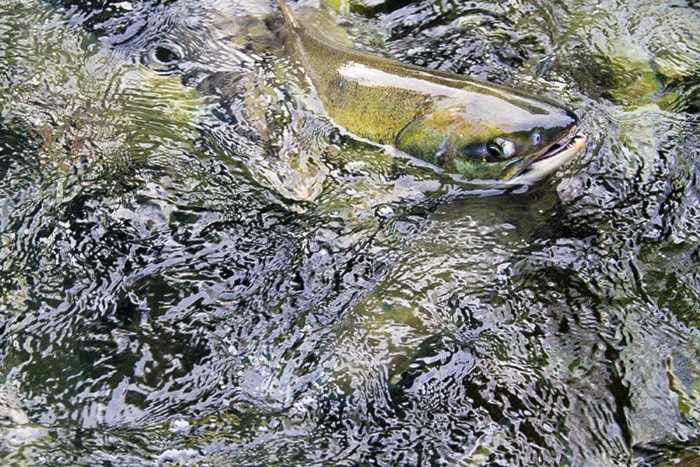They’ve tried releasing thousands of kokanee over the spillway of the Alouette reservoir dam each spring, attempting to rebuild the sockeye fishery in the South Alouette River.
With returns inconsistent, that hasn’t worked out so well for the Alouette River Management Society.
Now, the river keepers are getting serious.
Instead of trusting the freshwater kokanee salmon to migrate down the South Alouette River, spend a few years in the Pacific Ocean and come back as sockeye, and eventually rebuild the run that’s been extinct since the 1920s, the group wants to see if raising fish in a hatchery will speed up the process.
Over the next two years, the society will be raising fry, which are a couple centimetres long, as well as finger-length smolts, and releasing them into both the lake and the river.
“The ratio of return is less than one per cent right now. We want to get it to two per cent,” said Nicole Driedger, of ARMS.
“Our best chance is releasing the smolts into the river.”
About 25,000 juvenile fish will be released into the lake and 10,000 into the river over the next two years. Fisheries and Oceans Canada and the B.C. Ministry of Environment have both approved the study. A request for funding the project will be made to B.C. Hydro’s Fish and Wildlife Compensation Program.
The fish will be the progeny of both the limited numbers of sockeye that actually return to the South Alouette, as well as the kokanee that are resident in the lake.
The number of returnees will be compared with the sockeye that normally return, to see which species, purebred sockeye, kokanee, or hybrids and which method of release will produce greater returns.
The results, it’s hoped, will confirm if a hatchery can be an effective, intermediary step to re-establishing a full-fledged sockeye run in the South Alouette River and bolster the case for building ARMS’s long-term dream of building a fishway or ladder around the 11-metre high dam so fish can access the lake.
The ultimate goal is to re-establish the sockeye run in the South Alouette River that was wiped out in 1926, when B.C. Hydro built the dam, sealing the sockeye in the lake and cutting off those in the river from their spawning grounds.
Driedger compared the attempt to rebuild the run as a Jurassic Park-type experiment.
After the dam blocked the lake the trapped sockeye became kokanee, with successive generations swimming in the lake, awaiting a return to the Pacific Ocean.
Now, almost a century later, those fish could again become ocean-going sockeye salmon, with all the tourist and economic potential that sockeye bring.
“Our sockeye are kind of like dinosaurs, they were extinct. So making something out of nothing is pretty cool.”
Persuading B.C. Hydro to build a fishway will give fish a direct connection from the river to the lake, where sockeye spawn. Other species of salmon and trout also will benefit by reconnecting to the entire lake system.
This year has seen healthy runs of chum and pinks returning to the South Alouette River.
“We have so many chum that the coho can’t find spawning grounds,” said Driedger.
The huge numbers of decaying fish, however, provide fertilizer and nutrients for plants along the river, as well as eggs and fry in the river.
Driedger points out that many groups each year visit the Rivers Heritage Centre, which in October included a Chinese delegation. Members were surprised to learn there was no fishway connecting the river to the lake.
She was told that all new dams in China are required to have fishways.
